Bromine
- CAS NO.:7726-95-6
- Empirical Formula: Br2
- Molecular Weight: 159.81
- MDL number: MFCD00010896
- EINECS: 231-778-1
- SAFETY DATA SHEET (SDS)
- Update Date: 2025-10-31 08:01:18

What is Bromine?
Chemical properties
Butane, CH3(CH2)2CH3, also known as n-butane and methyl-ethyl methane,is a colorless gas that occurs in natural gas and is obtained by cracking petroleum. It is used as a refrigerant and as a fuel.
Chemical properties
Bromine is a fuming red to dark reddishbrown, nonflammable, volatile liquid with a suffocating odor. Soluble in water and alcohol.
Physical properties
Bromine is a thick, dark-red liquid with a high density. It is the only nonmetallic elementthat is a liquid at normal room temperatures. (The other element that is liquid at room temperaturesis the metal mercury.) Bromine’s density is 3.12g/cm3, which is three times the density ofwater. Its vapor is much denser than air, and when it is poured into a beaker, the fumes hug thebottom of the container. Bromine’s melting point is –72°C, and its boiling point is 58.8°C.
Isotopes
There are a total of 40 isotopes of bromine. Of these, only two are stable: Br-79constitutes 50.69% of the stable bromine found on Earth, and Br-81 makes up 49.31%of the naturally occurring abundance. All the other isotopes of bromine are radioactivewith half-lives ranging from 1.2 nanoseconds to 16.2 hours.
Origin of Name
Named for the Greek word bromos, which means “stench.”
Occurrence
Bromine is the 62nd most abundant element found on Earth. Although it is not founduncombined in nature, it is widely distributed over the Earth in low concentrations. It isfound in seawater at a concentration of 65 ppm. This concentration is too low for the bromineto be extracted directly, so the salt water must be concentrated, along with chlorine and othersalts, by solar evaporation, distillation, or both.
Most of the commercial bromine that is recovered comes from underground salt minesand deep brine wells. A major source is the deep brine wells found in the state of Arkansas and Great Salt Lake of Utah in the United States. This brine contains about one-half percentbromine. Chlorine gas is added to hot brine that oxidizes the bromine ions in solution, whichis then collected as elemental bromine. It is also commercially produced, along with potash,from evaporation of the high-salt-content water of the Dead Sea, which is 1290 feet below sealevel and is located on the borders of the Middle Eastern countries of Israel and Jordan.
History
Bromine was discovered by Balard in 1826, but not prepared in quantity until 1860. A member of the halogen group of elements, it is obtained from natural brines from wells in Michigan and Arkansas. Little bromine is extracted today from seawater, which contains only about 85 ppm. Bromine is the only liquid nonmetallic element. Bromine is a heavy, mobile, reddish-brown liquid, volatilizing readily at room temperature to a red vapor with a strong disagreeable odor, resembling chlorine, and having a very irritating effect on the eyes and throat; it is readily soluble in water or carbon disulfide, forming a red solution, is less active than chlorine but more so than iodine; it unites readily with many elements and has a bleaching action; when spilled on the skin it produces painful sores. Bromine presents a serious health hazard, and maximum safety precautions should be taken when handling it. Much of the bromine output in the U.S. was used in the production of ethylene dibromide, a lead scavenger used in making gasoline antiknock compounds. Lead in gasoline, however, has been drastically reduced, due to environmental considerations. This will greatly affect future production of bromine. Bromine is also used in making fumigants, flameproofing agents, water purification compounds, dyes, medicinals, sanitizers, inorganic bromides for photography, etc. Organic bromides are also important. Natural bromine is made of two isotopes, 79Br and 81Br. Thirty-four isotopes and isomers are known. Bromine (99.8%) costs about $70/kg.
Characteristics
Bromine is a very reactive nonmetallic element, located between chlorine and iodine in theperiodic table. Bromine gas fumes are very irritating and toxic and will cause severe burns ifspilled on the skin.
Bromine is soluble in most organic solvents and only slightly soluble in H2O. Liquid brominewill attack most metals, even platinum.
The Uses of Bromine
manufacture of organic and inorganic chemicals, such as fuel additives, fire retardants, pesticides, oil well drilling fluids, pharmaceuticals, dyestuffs. In water disinfection; as bleaching agent, surface disinfectant.
The Uses of Bromine
Bromine is used for bleaching fibers and silk,as a disinfectant for purifying water, in themanufacture of bromo compounds for dyesand pharmaceutical uses, as an analyticalreagent, and in organic synthesis. It occursin igneous rock and seawater.
The Uses of Bromine
A major use is as a gasoline additive called ethylene dibromide, an antiknock agent thatremoves lead additives from automobile engines after the combustion of leaded gasoline, thuspreventing the lead from forming deposits in the engine. The lead prevents premature burningof the gas/air mixture in the engine’s cylinders that causes the “knocking” sound in the engine.The lead combines with the bromine to form lead bromide, a volatile gas, which is expelledthrough the car’s exhaust system. Ethylene dibromide is a potent carcinogen. Since the introductionof lead free gasoline, this use has declined in importance; recently, other chemicalshave been substituted for the lead as an additive in gasoline.
Methyl bromide is used as a pesticide, which is very effective against parasitic nematodes(e.g., hookworms). Silver bromide is used in photography. Compounds of bromide are usedas flame-retardants, water purifiers, dyes, and pharmaceuticals. Bromine has many applicationswhen it is combined with organic compounds. For example, it is used as a reagent tostudy the organic reactions of many other compounds. It is also used as a disinfectant, afumigant, and a sedative. In the nineteenth century, many people took a “bromide” to easetension.
Definition
Nonmetallic halogen element of atomic number 35, group VIIA of the periodic table. Valences 1, 3, 5 (valence of 7 also reported). There are two stable isotopes.
Definition
A deep red, moderately reactive element belonging to the halogens; i.e. group 17 (formerly VIIA) of the periodic table. Bromine is a liquid at room temperature (mercury is the only other element with this property). It occurs in small amounts in seawater, salt lakes, and salt deposits but is much less abundant than chlorine. Bromine reacts with most metals but generally with less vigor than chlorine. It has less oxidizing power than chlorine and consequently can be released from solutions of bromides by reaction with chlorine gas. The laboratory method is the more convenient oxidation by manganese dioxide. Industrial methods of production utilize oxidation by chlorine or electrolysis with removal from the solution by purging with air. Bromine and its compounds are used in pharmaceuticals, photography, chemical synthesis, fumigants, and in significantly large quantities as 1,2- dibromoethane (which is added to gasoline to combine with lead produced from the decomposition of the antiknock agent lead tetraethyl).
The electropositive elements form ionic bromides and the non-metals form fully covalent bromides. Like chlorine, bromine forms oxides, Br2O and BrO2, both of which are unstable. The related oxo-acid anions hypobromite (BrO–) and bromate (BrO3–) are formed by the reaction of bromine with cold aqueous alkali and hot aqueous alkali respectively, but the bromine analogs of chlorite and perchlorate are not known.
Bromine and the interhalogens are highly toxic. Liquid bromine and bromine solutions are also very corrosive and goggles and gloves should always be worn when handling such compounds.
Definition
Bromine water: A pale yellow liquid made by reacting mercury(II) oxide with bromine water. It has strong bleaching powers. Bromic(I) acid will donate protons to only a small extent and hence is a weak acid in aqueous solution. It is a strong oxidizing agent.
Definition
bromine: Symbol Br. A halogen element;a.n. 35; r.a.m. 79.909; r.d.3.13; m.p. –7.2°C; b.p. 58.78°C. It is ared volatile liquid at room temperature,having a red-brown vapour.Bromine is obtained from brines inthe USA (displacement with chlorine);a small amount is obtainedfrom sea water in Anglesey. Largequantities are used to make 1,2-dibromoethaneas a petrol additive. Itis also used in the manufacture ofmany other compounds. Chemically,it is intermediate in reactivity betweenchlorine and iodine. It formscompounds in which it has oxidationstates of 1, 3, 5, or 7. The liquid isharmful to human tissue and thevapour irritates the eyes and throat.The element was discovered in 1826by Antoine Balard.
General Description
A reddish-brown aqueous solution. The solubility of bromine in water equals 0.33 mg/ mL.
Air & Water Reactions
Slightly soluble in water.
Reactivity Profile
BROMINE SOLUTION is an oxidizing agent. Bromine disproportionates rapidly in basic water to give bromide ion and bromate ion. The latter is also an oxidizing agent. Dissolution lowers reactivity compared to pure bromine. Reacts with reducing reagents. Reacts with hydrogen, diethylzinc, dimethylformamide, ammonia, trimethylamine, nitromethane, metal azides (silver or sodium azide). Can react with Mg, Sr, B, Al, Hg, Ti, Sn, Sb in powder or sheet form, to form bromides. Can react with methanol, ethanol, aldehydes, ketones, carboxylic acids, diethyl ether, carbonyl compounds, tetrahydrofuran, acrylonitrile, ozone, phosphorus, natural rubber. Reactions with red phosphorus, metal azides, nitromethane, silane and its homologues may be vigorous.[Bretherick, 5th ed., 1995, p. 109].
Hazard
Toxic by ingestion and inhalation, severe skin irritant. Strong oxidizing agent, may ignite combustible materials on contact. Upper and lower respiratory tract irritant, and lung damage.
Hazard
Bromine and many bromine compounds in liquid form are very difficult to remove fromthe skin and produce deep burns that take a long time to heal.
Almost all bromine compounds are toxic if inhaled or ingested. Many are extremely explosive.When working with bromine, it is important to avoid breathing the vapors, as well as toavoid contact with the skin.
Health Hazard
TOXIC; inhalation, ingestion or skin contact with material may cause severe injury or death. Contact with molten substance may cause severe burns to skin and eyes. Avoid any skin contact. Effects of contact or inhalation may be delayed. Fire may produce irritating, corrosive and/or toxic gases. Runoff from fire control or dilution water may be corrosive and/or toxic and cause pollution.
Health Hazard
Bromine is highly corrosive to the skin, causing irritation and destruction with blister formation. If bromine is not removed from the skin immediately, deep-seated ulcers develop, which heal slowly. Severely painful and destructive eye burns may result from contact with either liquid or concentrated vapors of bromine. Bromine is a moderately toxic substance via inhalation. There are good warning properties for bromine: lacrimation begins at ~1 ppm, and 50 ppm is highly irritating to humans. A short exposure (minutes) to 1000 ppm would likely be fatal for humans. Vapor exposures can cause irritation and damage to the upper and lower respiratory tract (nose, throat, and lungs) to varying degrees depending on the concentration. If exposure is sufficiently high, it will cause pulmonary edema, which could lead to death. Other reported symptoms of overexposure include coughing, tightness of chest, nosebleed, headache, and dizziness, followed after some hours by abdominal pain, diarrhea, and a measles-like rash on the trunk and extremities. Animal studies on the chronic toxicity of bromine revealed disturbances in the respiratory, nervous, and endocrine systems after exposure to 0.2 ppm for 4 months; similar exposure to 0.02 ppm did not produce any adverse effects
Health Hazard
Bromine is a corrosive liquid and a moder ately toxic substance. The target organs arethe respiratory system, eyes, and the centralnervous system; the routes of exposure areinhalation of its vapors, ingestion of the liq uid, and skin contact. Bromine is an irritantto respiratory passages and can cause injuryto the lungs. A concentration in the rangeof 50 ppm of bromine vapor in air is highlyirritating to humans, and a short exposure to1000 ppm for 15 minutes can be fatal. Othersymptoms are dizziness, headache, coughing,and lacrimation, manifested at a short expo sure to 10–20 ppm of vapor. Ingestion of theliquid can cause nausea, abdominal pain, anddiarrhea. It is corrosive to the skin and eyes,causing burns. Its odor can be detected at alevel of 3 ppm in air.
Fire Hazard
Non-combustible, substance itself does not burn but may decompose upon heating to produce corrosive and/or toxic fumes. Some are oxidizers and may ignite combustibles (wood, paper, oil, clothing, etc.). Contact with metals may evolve flammable hydrogen gas. Containers may explode when heated.
Fire Hazard
Bromine alone is a noncombustible substance (NFPA rating = 0)
Flammability and Explosibility
Bromine alone is a noncombustible substance (NFPA rating = 0).
Potential Exposure
Bromine is primarily used in the manufacture of gasoline antiknock compounds (1,2-dibromoethane). Other uses are for gold extraction; in brominating hydrocarbons; in bleaching fibers and silk; in the manufacture of military gas, dyestuffs; and as an oxidizing agent. It is used in the manufacture of many pharmaceuticals and pesticides.
Storage
work with bromine should be conducted in a fume hood to prevent exposure by inhalation, and splash goggles and rubber gloves should be worn at all times when handling this corrosive substance. Containers of bromine should be stored at room temperature in a secondary container separately from readily oxidizable substances.
Shipping
Bromine UN1744 Hazard class: 8; Labels: 8— Corrosive material; 6.1—Poison Inhalation Hazard, Inhalation Hazard Zone A. Bromine solutions, Hazard class: 8; Labels: 8—Corrosives materials; 6.1—Poison Inhalation Hazard, Inhalation Hazard Zone A; Bromine solutions, Hazard class: 8 Labels: 8—Corrosive material; 6.1—Poison Inhalation Hazard, Inhalation Hazard Zone B.
Purification Methods
Reflux the brown liquid with solid KBr and distil, then dry the distillate by shaking it with an equal volume of conc H2SO4, then redistil it. The H2SO4 treatment can be replaced by direct distillation from BaO or P2O5 A more extensive purification [Hildenbrand et al. J Am Chem Soc 80 4129 1958] is to reflux about 1L of bromine for 1hour with a mixture of 16g of CrO3 in 200mL of conc H2SO4 (to remove organic material). The bromine is distilled into a clean, dry, glass-stoppered bottle, and chlorine is removed by dissolving ca 25g of freshly fused CsBr in 500mL of the bromine and standing overnight. To remove HBr and water, the bromine is then distilled back and forth through a train containing alternate tubes of MgO and P2O5. [Schmeisser in Handbook of Preparative Inorganic Chemistry (Ed. Brauer) Academic Press Vol I p 275 1963.] HIGHLY TOXIC.
Incompatibilities
A powerful oxidizer. May cause fire and explosions in contact with organic or other readily oxidizable materials. Contact with aqueous ammonia, acetaldehyde, acetylene, acrylonitrile, or with metals, may cause violent reactions. Anhydrous Br2 reacts with aluminum, titanium, mercury, potassium; wet Br2 with other metals. Also incompatible with alcohols, antimony, alkali hydroxides, arsenites, boron, calcium nitrite, cesium monoxide, carbonyls, dimethyl formamide, ethyl phosphine, fluorine, ferrous and mercurous salts; germanium, hypophosphites, iron carbide, isobutyronphenone, magnesium phosphide, methanol, nickel carbonyl, olefins, ozone, sodium and many other substances. Attacks some coatings, and some forms of plastic and rubber. Corrodes iron, steel, stainless steel; and copper.
Waste Disposal
Large volumes of concentrated solutions of reducing agents (bisulfites or ferrous salts) may be added. The mixture is neutralized with soda ash or dilute HCl and flushed to the sewer with large volumes of water.
Properties of Bromine
| Melting point: | −7.2 °C(lit.) |
| Boiling point: | 58.8 °C(lit.) |
| Density | 3.119 g/mL at 25 °C(lit.) |
| vapor density | 7.14 (vs air) |
| vapor pressure | 175 mm Hg ( 20 °C) |
| Flash point: | 113 °C |
| storage temp. | 2-8°C |
| solubility | 35g/l |
| form | Liquid |
| color | Red-brown |
| Specific Gravity | 3.119 |
| Odor | Odor can be detected at concentrations as low as 0.05 ppm; exposure to concentrations below 1
ppm causes lacrimation. |
| Resistivity | 7.8E18 μΩ-cm, 20°C |
| Water Solubility | 35 g/L (20 ºC) |
| Merck | 13,1378 |
| Exposure limits | TLV-TWA 0.1 ppm (0.7 mg/m3) (ACGIH,
MSHA, NIOSH, and OSHA); TLV-STEL
0.3 ppm (ACGIH); IDLH 10 ppm (NIOSH). |
| Stability: | Stable. Incompatible with reducing agents, alkali metals, powdered metals, steel, iron, copper, organic materials. |
| CAS DataBase Reference | 7726-95-6(CAS DataBase Reference) |
| NIST Chemistry Reference | Bromine(7726-95-6) |
| EPA Substance Registry System | Bromine(7726-95-6) |
Safety information for Bromine
| Signal word | Danger |
| Pictogram(s) |
 Corrosion Corrosives GHS05  Skull and Crossbones Acute Toxicity GHS06  Health Hazard GHS08  Environment GHS09 |
| GHS Hazard Statements |
H302:Acute toxicity,oral H314:Skin corrosion/irritation H330:Acute toxicity,inhalation H331:Acute toxicity,inhalation H340:Germ cell mutagenicity H351:Carcinogenicity H400:Hazardous to the aquatic environment, acute hazard |
| Precautionary Statement Codes |
P201:Obtain special instructions before use. P260:Do not breathe dust/fume/gas/mist/vapours/spray. P261:Avoid breathing dust/fume/gas/mist/vapours/spray. P273:Avoid release to the environment. P280:Wear protective gloves/protective clothing/eye protection/face protection. P284:Wear respiratory protection. P310:Immediately call a POISON CENTER or doctor/physician. P320:Specific treatment is urgent (see … on this label). P303+P361+P353:IF ON SKIN (or hair): Remove/Take off Immediately all contaminated clothing. Rinse SKIN with water/shower. P304+P340:IF INHALED: Remove victim to fresh air and Keep at rest in a position comfortable for breathing. P305+P351+P338:IF IN EYES: Rinse cautiously with water for several minutes. Remove contact lenses, if present and easy to do. Continuerinsing. P405:Store locked up. |
Computed Descriptors for Bromine
Bromine manufacturer
New Products
4,4-Difluoropiperidine hydrochloride tert-butyl 9-methoxy-3-azaspiro[5.5]undecane-3-carboxylate Indole Methyl Resin N-Isopropylurea N,N-Dicyclohexylcarbodiimide(DCC) MELDRUMS ACID 5-METHYLISOXAZOLE-4-CARBOXYLIC ACID Magnessium Bis glycinate Zinc ascorbate 1-bromo-2-butyne 2-acetamidophenol 9(10H)-anthracenone Erythrosin B, 4-Piperidinopiperidine 2-((4-morpholinophenylamino) (methylthio) methylene) malononitrile 2,4-dihydroxybenzaldehyde 3-(4-morpholinophenylamino)-5-amino-1H-pyrazole-4-carbonitrile Methyl 2-methylquinoline-6-carboxylate 2,6-dichloro-4-nitropyridine 4-Bromo-2-chlorobenzonitrile 2-(benzylamino)acetic acid hydrochloride 4-(tert-Butoxycarbonylamino)but- 2-ynoic acid 3,4-dihydro-2H-benzo[b][1,4]dioxepine 1-Phenyl-1-cycloprppanecarboxylicacidRelated products of tetrahydrofuran



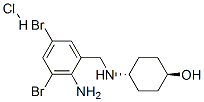

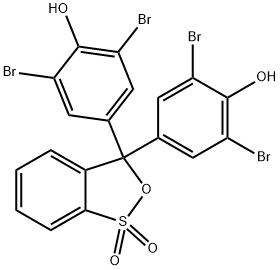


You may like
-
 7726-95-6 99%View Details
7726-95-6 99%View Details
7726-95-6 -
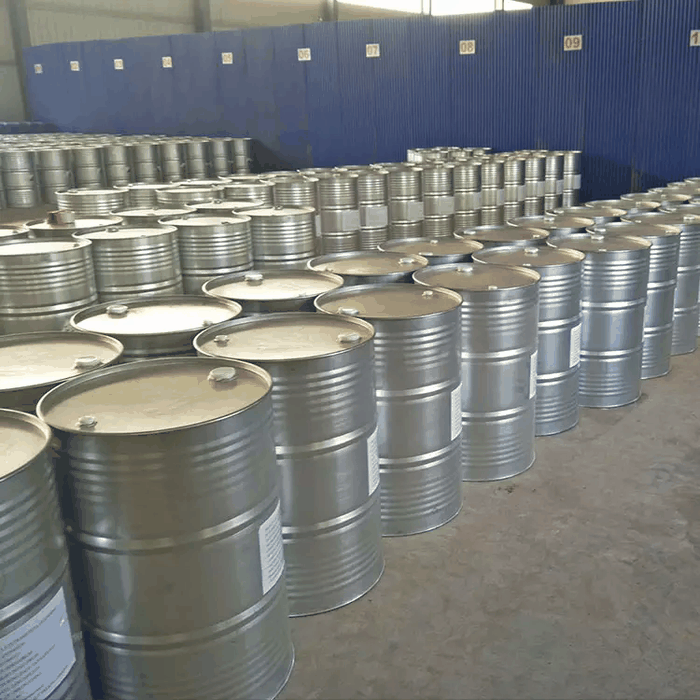 LIQIUD BROMINE 99%View Details
LIQIUD BROMINE 99%View Details
7726-95-6 -
 BROMINE (5x20ML AMP) 99%View Details
BROMINE (5x20ML AMP) 99%View Details
7726-95-6 -
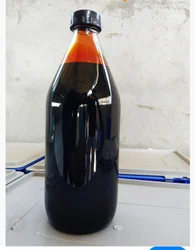 Liquid Bromine, BottleView Details
Liquid Bromine, BottleView Details
7726-95-6 -
 Liquid Bromine, 1 litre, BottleView Details
Liquid Bromine, 1 litre, BottleView Details
7726-95-6 -
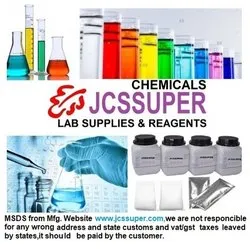 JCSSUPER 7726-95-6 Bromine Extrapure 250 MlView Details
JCSSUPER 7726-95-6 Bromine Extrapure 250 MlView Details
7726-95-6 -
 Bromine, 25 litre, DrumView Details
Bromine, 25 litre, DrumView Details
7726-95-6 -
 Bromine Extra pureView Details
Bromine Extra pureView Details
7726-95-6
